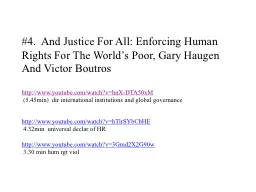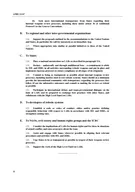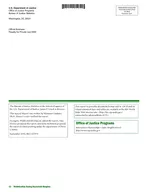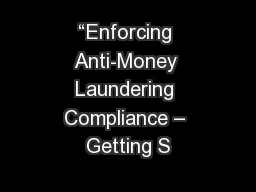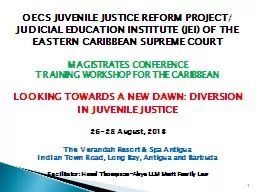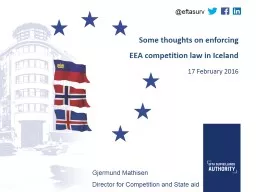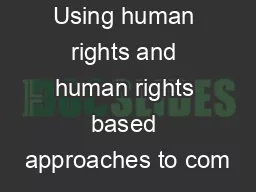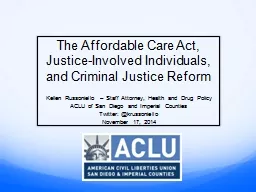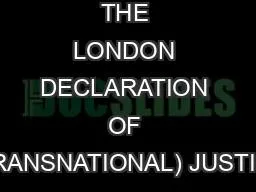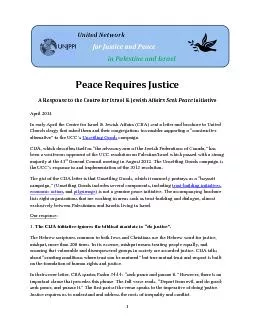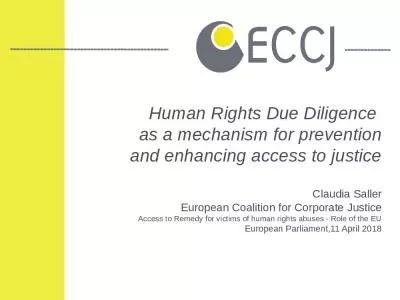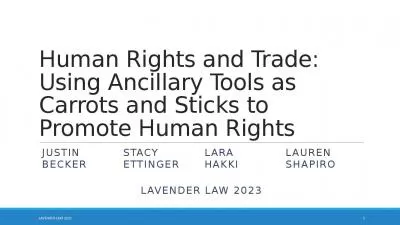PPT-#4. And Justice For All: Enforcing Human Rights For The Wo
Author : tatiana-dople | Published Date : 2016-04-05
httpwwwyoutubecomwatchvhnXDTA50xM 545min dir international institutions and global governance httpwwwyoutubecomwatchvhTlrSYbCbHE 432min universal declar of
Presentation Embed Code
Download Presentation
Download Presentation The PPT/PDF document "#4. And Justice For All: Enforcing Huma..." is the property of its rightful owner. Permission is granted to download and print the materials on this website for personal, non-commercial use only, and to display it on your personal computer provided you do not modify the materials and that you retain all copyright notices contained in the materials. By downloading content from our website, you accept the terms of this agreement.
#4. And Justice For All: Enforcing Human Rights For The Wo: Transcript
Download Rules Of Document
"#4. And Justice For All: Enforcing Human Rights For The Wo"The content belongs to its owner. You may download and print it for personal use, without modification, and keep all copyright notices. By downloading, you agree to these terms.
Related Documents

